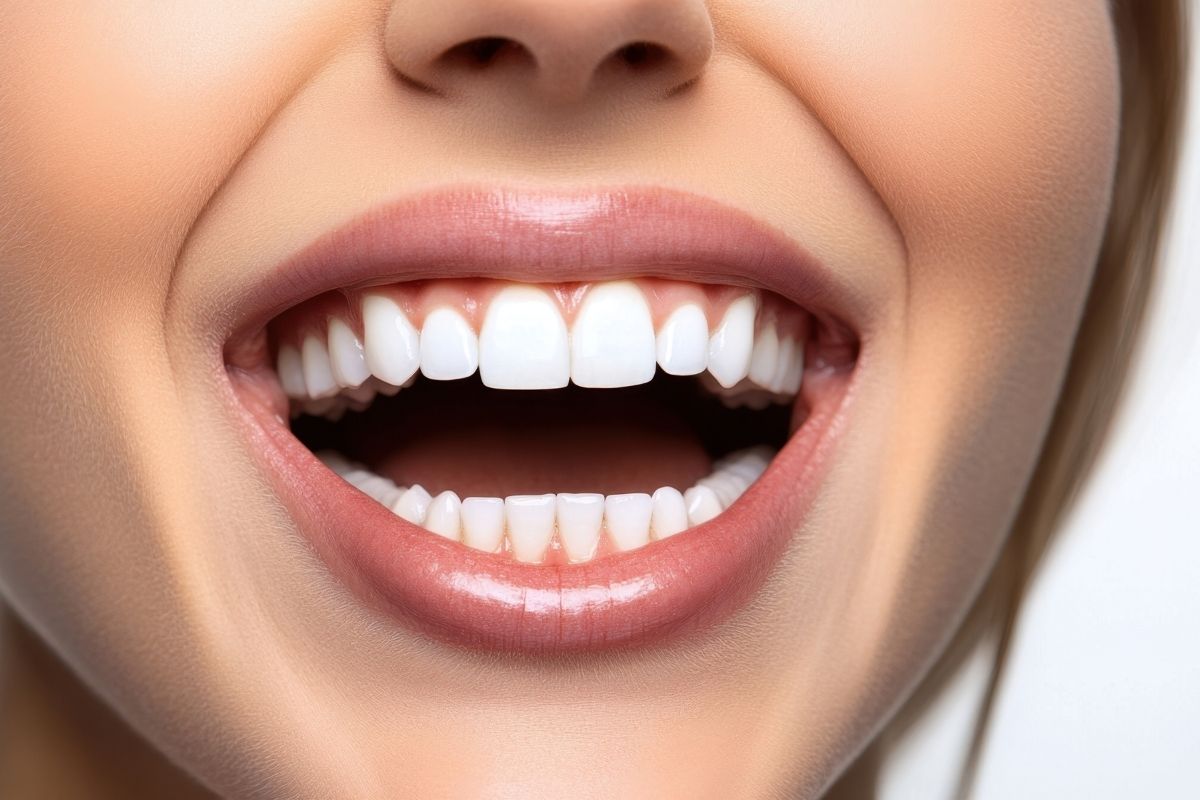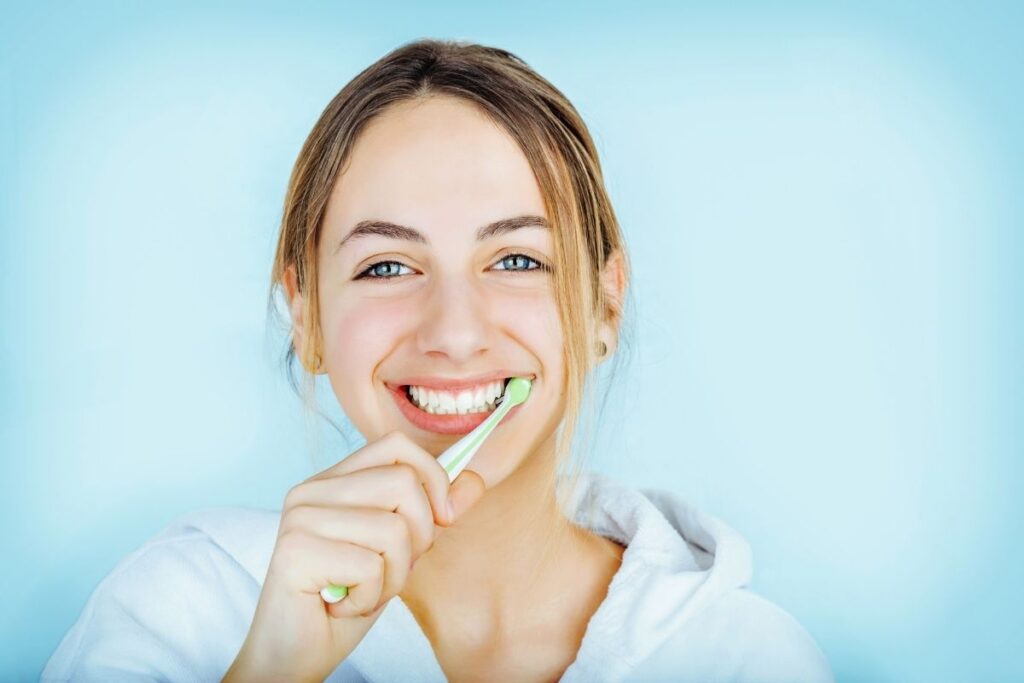Top 5 Myths About Teeth Whitening You Shouldn’t Believe

Table of Contents
Teeth whitening has become one of the most popular cosmetic dental treatments worldwide, yet it’s also surrounded by countless misconceptions. From TikTok hacks to word-of-mouth stories, myths about whitening spread quickly and often create unnecessary fear or unrealistic expectations. This is why the topic of teeth whitening myths needs to be addressed clearly.
For many people, the idea of whitening is linked to enamel damage, sensitivity, or even the belief that results last forever. In reality, modern treatments are safe, effective, and tailored to individual needs. Professional clinics use advanced techniques and materials that protect the teeth while delivering brighter, natural-looking results.
Understanding the truth behind common teeth whitening myths is the first step toward making an informed decision. In this guide, we’ll explore the five most common misconceptions, explain why they’re misleading, and reveal the facts every patient should know before starting their whitening journey.
Myth 1 – Teeth Whitening Damages Your Enamel
One of the most common teeth whitening myths is that the treatment permanently damages tooth enamel. This misconception often comes from outdated methods or unregulated home remedies. In reality, professional whitening performed by a dentist is designed to be safe and carefully controlled.
During treatment, whitening agents such as hydrogen peroxide or carbamide peroxide penetrate the enamel to break down stains, but they do not strip away or weaken the tooth’s structure. Dentists also apply protective measures to the gums and adjust the strength of the whitening gel to suit each patient’s needs.
Problems usually arise when people attempt DIY methods like using lemon juice, baking soda, or overly strong kits without supervision. These can cause erosion or sensitivity if misused. However, when carried out in a professional setting, whitening does not harm enamel. Instead, it refreshes the smile while maintaining the integrity and health of the teeth.
Myth 2 – At-Home Kits Work Just as Well as Professional Treatment
Another widespread teeth whitening myth is that over-the-counter kits give the same results as professional whitening. While at-home kits may lighten teeth slightly, they are not as powerful or precise as treatments performed by a dentist. The main reason is that professional whitening uses higher-grade whitening gels and advanced technology, which safely deliver faster and longer-lasting results.
At-home kits also lack customization. A dentist adjusts the strength of the whitening gel and applies it evenly with custom trays or in-office systems, ensuring consistent results. In contrast, store-bought strips or generic trays often lead to patchy whitening or gum irritation if not used properly.
This doesn’t mean at-home kits are useless they can be a good maintenance option between professional sessions. But believing they can fully replace a clinical procedure is misleading. When it comes to dramatic, safe, and even results, professional teeth whitening remains the gold standard.
Myth 3 – Teeth Whitening Results Are Permanent
One of the most misleading teeth whitening myths is the belief that once your teeth are whitened, the results will last forever. In reality, whitening is effective, but it is not permanent. Teeth are constantly exposed to foods and drinks that can stain them, such as coffee, tea, red wine, and dark sauces. Smoking also plays a major role in discoloration, meaning even the brightest smile will eventually lose some of its shine if proper care isn’t taken.
Professional whitening can keep teeth bright for months or even years, depending on lifestyle habits and oral hygiene routines. Regular brushing, flossing, and avoiding stain-causing products help prolong results. Many dentists also recommend occasional touch-up sessions or at-home maintenance kits to keep the smile looking fresh.
So while teeth whitening results are impressive, they are not permanent. Believing otherwise sets unrealistic expectations and often leads to disappointment. The truth is that whitening requires maintenance, just like any other cosmetic treatment.
Myth 4 – Natural Remedies Work Better Than Treatments
A popular teeth whitening myth suggests that natural remedies like baking soda, lemon juice, or charcoal powders are safer and more effective than professional treatments. While these DIY methods are widely promoted online, they are often harsh and can do more harm than good. For example, lemon juice is highly acidic and can erode enamel, while abrasive powders like charcoal may scratch the tooth surface, leading to sensitivity and long-term damage.
Professional whitening, on the other hand, is scientifically tested and carefully monitored. Dentists use controlled amounts of whitening agents that brighten teeth without weakening or eroding enamel. Natural remedies might offer a temporary illusion of whiteness by removing surface stains, but they cannot penetrate the enamel to lift deeper discoloration.
The truth is that natural teeth whitening methods are not a safe alternative to professional care. Believing this myth can leave patients with damaged teeth and disappointing results. For a healthy, lasting, and radiant smile, clinically approved treatments remain the best option.
Myth 4 – Natural Remedies Work Better Than Treatments
A popular teeth whitening myth suggests that natural remedies like baking soda, lemon juice, or charcoal powders are safer and more effective than professional treatments. While these DIY methods are widely promoted online, they are often harsh and can do more harm than good. For example, lemon juice is highly acidic and can erode enamel, while abrasive powders like charcoal may scratch the tooth surface, leading to sensitivity and long-term damage.
Professional whitening, on the other hand, is scientifically tested and carefully monitored. Dentists use controlled amounts of whitening agents that brighten teeth without weakening or eroding enamel. Natural remedies might offer a temporary illusion of whiteness by removing surface stains, but they cannot penetrate the enamel to lift deeper discoloration.
The truth is that natural teeth whitening methods are not a safe alternative to professional care. Believing this myth can leave patients with damaged teeth and disappointing results. For a healthy, lasting, and radiant smile, clinically approved treatments remain the best option.

Teeth Whitening Before and After – Setting Realistic Expectations
One of the most eye-catching parts of any treatment is the teeth whitening before and after comparison. Photos online often show dramatic transformations, which can give the impression that everyone will achieve a perfect Hollywood smile in one session. The truth is more balanced: whitening can brighten teeth by several shades, but the exact results depend on each person’s natural tooth color, lifestyle, and oral health.
Professional whitening aims to create a natural, healthy-looking brightness, not an artificial glow. Patients who smoke heavily or drink coffee and tea regularly may need additional sessions or touch-ups over time. Similarly, existing dental restorations like crowns or fillings do not change color, so dentists often plan treatments to blend results seamlessly.
By setting realistic expectations, patients can fully appreciate the improvement without disappointment. Teeth whitening results are impressive, but they should be viewed as a boost to one’s natural smile rather than a complete transformation into something unnatural.
Teeth Whitening Before and After – Setting Realistic Expectations
One of the most eye-catching parts of any treatment is the teeth whitening before and after comparison. Photos online often show dramatic transformations, which can give the impression that everyone will achieve a perfect Hollywood smile in one session. The truth is more balanced: whitening can brighten teeth by several shades, but the exact results depend on each person’s natural tooth color, lifestyle, and oral health.
Professional whitening aims to create a natural, healthy-looking brightness, not an artificial glow. Patients who smoke heavily or drink coffee and tea regularly may need additional sessions or touch-ups over time. Similarly, existing dental restorations like crowns or fillings do not change color, so dentists often plan treatments to blend results seamlessly.
By setting realistic expectations, patients can fully appreciate the improvement without disappointment. Teeth whitening results are impressive, but they should be viewed as a boost to one’s natural smile rather than a complete transformation into something unnatural.
Conclusion – The Truth Behind the Myths
The world of teeth whitening is full of half-truths and misconceptions, but most teeth whitening myths crumble under closer examination. Professional whitening does not damage enamel, at-home kits cannot fully replace clinical treatments, and results while impressive are not permanent without maintenance. Likewise, natural remedies are often more harmful than helpful, and even patients with sensitive teeth can safely benefit when guided by a professional.
The key takeaway is simple: whitening works best when it is safe, personalized, and realistic. By choosing a trusted dentist, patients can enjoy brighter smiles without falling for misleading promises. Teeth whitening is not about chasing perfection it’s about enhancing natural beauty and boosting confidence. When the myths are stripped away, what remains is a safe, effective, and widely accessible treatment that continues to improve millions of smiles around the world.
Turkey Teeth Google Reviews
FAQ – Teeth Whitening Questions Answered
How long do teeth whitening results last?
Professional whitening can last from 6 months up to 2 years, depending on diet, lifestyle, and oral hygiene. Regular touch-ups and avoiding stain-causing drinks like coffee or red wine can extend the brightness.
Is teeth whitening safe for everyone?
Yes, when done under professional supervision. The myth that whitening is harmful is misleading dentists use regulated gels and protective measures to keep enamel safe. However, people with gum disease or untreated cavities should address those issues first.
What’s the difference between at-home kits and professional treatments?
At-home kits use lower-strength whitening gels and generic trays, which means slower and less even results. Professional whitening is stronger, faster, and tailored to your needs, ensuring safer and longer-lasting outcomes.
Can natural remedies whiten teeth effectively?
No. Methods like lemon juice or baking soda may seem effective but often damage enamel over time. Professional whitening remains the safest and most effective option.
Does teeth whitening work for sensitive teeth?
Yes, with the right approach. Dentists use special gels and techniques for patients with sensitivity, making whitening both safe and comfortable.
